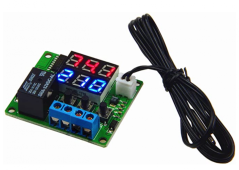I've been reading old threads about heating pads on LFP batteries, and controlling them with controllers like this:

That has a somewhat big flaw though: you'll still be heating your batteries even when they're not being charged (at night for example). And if you don't get sun for a week you could completely drain your batteries. And since it runs from your batteries, you're then dead in the proverbial water.
I would think that a better way to handle this would be at the BMS level, which could send power to a lead if the temperature drops below X (for example 35 degrees F) AND it's charging. And the power for that lead could come directly from the charging source (in other words the solar panel). Then it would only start charging if the temperature went above X.
Is there a BMS that does that?
If not, is there some reason I'm not seeing?

That has a somewhat big flaw though: you'll still be heating your batteries even when they're not being charged (at night for example). And if you don't get sun for a week you could completely drain your batteries. And since it runs from your batteries, you're then dead in the proverbial water.
I would think that a better way to handle this would be at the BMS level, which could send power to a lead if the temperature drops below X (for example 35 degrees F) AND it's charging. And the power for that lead could come directly from the charging source (in other words the solar panel). Then it would only start charging if the temperature went above X.
Is there a BMS that does that?
If not, is there some reason I'm not seeing?
Last edited:


